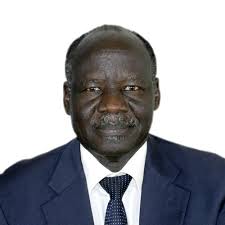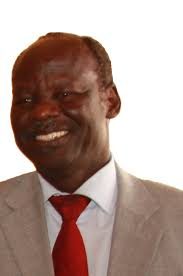SPLM’s “Taking Towns to Villages” Policy: A Land Grab Agenda Disguised as Development Agenda
By O. Aromi
Background
Worldwide, top-down development approaches –development policy prescriptions designed and dictated by central government bureaucrats, politicians and arm-chair planners sitting in headquarters away from local communities where development is supposed to happen, have been shown to be ineffective at best and suspicious at worst.
Remote as they are from local communities and therefore insensitive to local priorities and preferences, government headquarters bureaucrats and politicians frequently tend, intentionally or unintentionally, to judge local populations as incapable or don’t have the know-how, capacity or experience required for their own development.
Additionally, headquarters decision-makers and politicians often feel protected by their political power and authority, so they set out deciding which policies are right for local development. But in doing so they often end up prescribing one-size-fit-all type of development programs that are frequently at odds with local realities in different communities.
This is exactly what we have been seeing in the case of South Sudan, where the imposition of the SPLM so-called “Taking Towns to Villages” policy from the top has been viewed as suspicious, and indeed rejected, by the local populations in various locations and regions of the country whom headquarters-based SPLM politicians claim to want to develop. With their viewpoints and input being disregarded altogether, the local populations see this SPLM policy less of a development program and more of a land grab agenda.
Why Would Local Populations Reject a Policy Meant for their own Development?
During the implementation of the Comprehensive Peace Agreement (CPA)-mandated transitional period from 2005 -2011, Southern Sudanese, barely beginning to feel the quiet of peace in their villages, towns and cities after two decades of a bloody war, began to experience a shocking, objectionable phenomenon which came to be known widely as “land grabbing”. Suddenly land grabbing began to be experienced in multiple areas across South Sudan, as well as the topic of bitter discussions among South Sudanese inside and outside the country. After leading southerners from every community in the liberation war, the SPLM/SPLA unfortunately turned into a tribal organization involved in divisive policies, creating inter-community frictions and conflicts through land grabbing. This problem was one of the first signs South Sudan started on the wrong foot and headed in the wrong direction. Voices everywhere that flagged this land grabbing problem and warned against its potential grave consequences on stability and peaceful co-existence between local ethnic communities fell on deaf ears in Juba. The problem came to a flashing point first during the anniversary celebrations of the CPA at the Stadium compound in Malakal in 2009 when competing residents/tribes opposed to and those in agreement with this agenda quarreled and clashed over who should first perform at the occasion as a sign of being the rightful natives of the town. Soon after this incident in Malakal, the land grabbing phenomenon not only quickly spread to other regions and states like Equatoria and Bahr El-Ghazal, it also became an official policy of the SPLM-led government. Sooner than later, President Kiir, who himself was present during the events of Malakal mentioned above, issued a Presidential Decree from Juba giving Pigi, a Chollo land area on the eastern bank of River Nile south of Malakal to his tribal cousins, effectively annexing it to Jounglei State. Again local voices protesting against this unfair action by the President fell on deaf ears in Juba. This policy has now become more and more obvious and seemingly a guiding principle as the SPLM adopts the politics of divide and rule through ethnic divisions.
Taking Towns to Villages Policy Rejected Every
A. Upper Nile
Nowhere was the imposition of this disguised land grab agenda more aggressive, violent and bloody than in Upper Nile. Early on during the transitional period, ethnic land grabbers, encouraged by SPLM/A Led-Government, began attacking and burning down villages belonging to other communities in an in attempt to force their residents to evacuate and relocate. They also distributed provocative leaflets in Malakal claiming the town was theirs. These developments finally came to a boiling point in Malakal at some during the transitional period when an ethnic group affiliated with the land grabbers tried to forcefully remove Malakal County signs from County headquarters offices in the city and replace it with their own signs which would indicate Malakal belonged to them. The Upper Nile State Government of the day, being led by the SPLM and probably in support of the land grabbing agenda, did nothing to intervene to address the problem and the danger it represented. Faced with the inaction of the SPLM State and local governments, a group of local men from the native population just could not take it anymore watching their land being stolen in broad daylight. These men decided they would man up and speak up to the bullying and intimidation no matter what. They challenged and warned the aggressors not to touch or remove the County Signs or they would be met with unrelenting force. The aggressors, seeing firmness and resolve from the way these men spoke, backed off, eventually abandoning their attempt to force their way. From that day on, both SPLM Upper Nile State and central Governments got the message of a stiff local opposition to the land grabbing agenda. They subsequently stopped provocative violent land grabbing acts, although the Presidential degree annexing Pigi and bullying from SPLA-allied militia and political elements continued unabated.
B. Equatoria
Land grabbing problems were reported from several places in greater Equatoria during the transitional period and shortly after independence of South Sudan, including particularly in Numule. Shortly after independence, SPLM decision-makers issued orders to Central Equatoria Statement Government to relocate the State Capital, Juba, to Yei. But Central Equatoria State authorities, supported by the majority of local residents responded by rejecting this unpopular decision. The SPM/A made no scene about this resistance by the local population. However, the land grabbers chose to act elsewhere, by illegally grabbing and building on lands in Gombu and Reja villages around Juba, as well as in Juba Nabari area, which they renamed Tongpiny. Senior SPLMA offices, politicians and civilians from communities represented by the forces controlling the SPLM/A have now illegally built homes in these areas, especially in Gombu and Juba Nabari. They use military and political power to protect themselves and their supportive civilian land grabbers in this illegal act.
C. Bahr El-Ghazal
Similarly, the SPLM government worked hard to force this policy to grab other communities’ land in Bahr El-Ghazal. For example, it asked that Wau, the capital of Bahr El-Ghazal State, be relocated to an area called Bagiri. The indigenous people of Wau, seeing this decision as nothing but an agenda to force them from their land, protested and reject the decision.
A better way to Development: Asset-based Development and the role of Government in Development.
The role of government in development is not to take lands from their native owners and give them to President’s tribes-people. Such an approach is a recipe for instability, a recipe for conflict, as the rightful land owners would rather die than allow any power to hijack their God-given right over their lands. The role of government in development is to formulate policies that create and promote level playing ground for citizen participation in development processes, from planning to implementation. Policies that spur and promote local creativity, hard work and equal participation of citizens in their development are indispensable for sustainable development and are at the heart of development programming of a government of the people. Asset-based development values the contribution of everyone in local development practice. Asset-based development is a bottom-up, as opposed to top-down, approach that values local creativity, knowledge, wisdom, culture, resilience, skills and experiences accumulated by location populations over centuries of their existence as assets in local development. For sustainable development to be achieved, governments need to recognize local assets and to view local populations as stakeholders in development of their villages, towns and cities, not as passive implementers of development agenda developed and packaged in some remove headquarters. The Ujamaa (see Nyrere on Development, 1967), a socialist-inspired village development model articulated by former Tanzanian President Julius Nyrere failed precisely because it was a top-down approach. Seeking to reinvent the wheel in rural development practice by claiming to advance a village development model based on African values and traditions, Nyrere prescribed policies from his headquarters in the capital city that proclaimed that positive change in social and economic livelihoods in rural Tanzania could be brought about by uprooting, relocating and grouping smaller villages into larger urbanizing centers. The African village traditionally never developed into a town or city in this artificial way and eventually the Ujamaa policies ran into muddy terrain – they failed to lift Tanzania out of its poor status on the list of the world’s poor countries.
The author for this article can be reached at: oyhath@hotmail.com
Editor’s Note: The views expressed in the “Opinion Page” are solely the opinions of the writers. The veracity of any claims made are the responsibility of the author’s and are not necessarily endorsed by The Malakal Post. The Malakal Post, reserves the right to edit articles before publication. If you would like to submit an opinion article or analysis, please email your article at: info@malakalpost.com















